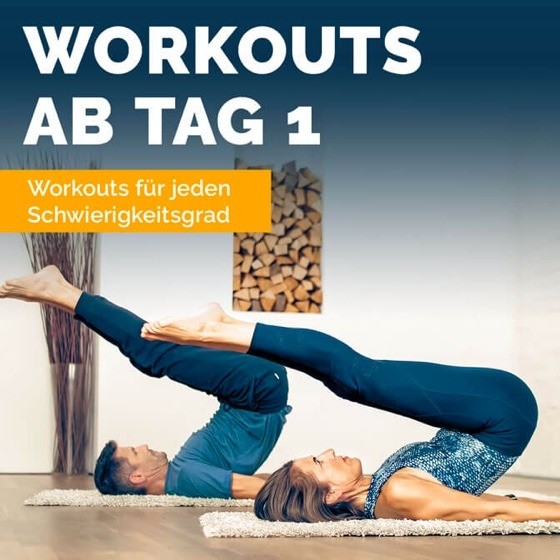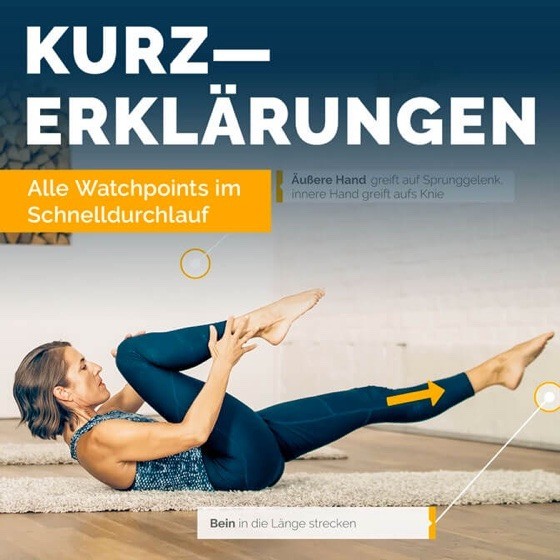
Pilates technique explained
The Pilates breathing
by Maria Felsner
The freer your breathing is, the better your body can rid itself of waste products. Through conscious breathing, your mind becomes calm and your cells fill with new energy.
The basis for conscious and calm breathing is an erect, economical and open posture. And this is exactly where Pilates breathing comes in.
General
Basically, we should breathe down to the belly. In order to fully develop the effectiveness of the exercises in Pilates, Pilates breathing was developed. This corresponds primarily to chest breathing, which supports the execution of the Pilates exercises by opening the chest.
In Pilates, we call this "three-dimensional breathing." That is, we breathe laterally into the flanks (lateral rib arches), backward and forward into the rib arch. Also, the breathing flows somewhat toward the abdomen. For a more detailed description of proper Pilates breathing, see the article below.
The idea behind the Pilates breathing technique is to primarily stabilize the lumbar spine and pelvis. This is done through a natural activation of the pelvic floor and deep abdominal muscles.
However, we do not reduce our breathing to chest breathing, but in the advanced level we also let the breathing flow into the abdomen, back or pelvis. These different breathing techniques have different effects on the exercises and subsequently on the body.
They are also the basis for increasing our potential in the strengthening exercises. This means that in both inhalation and exhalation we learn to hold the activation of the power center without tensing up.
It should be noted that if the abdominal and pelvic floor muscles are activated consciously or too intensively, the pelvic position and subsequently also the alignment of the lumbar spine will change. Therefore, in our Pilates training we always make sure that too much abdominal activation is NOT in the foreground.
We are also not talking about Belly button tight to pull inward. Instead, we make sure that there is a holistic activation of the respiratory muscles. This is not always easy at the beginning, but with increasing training you will succeed better and better.
In the Pilates breathing will always accompany us that when preparing for a Pilates exercise we inhale through the nose and during the execution of the exercise we inhale through a slight "Lip brake" exhale.
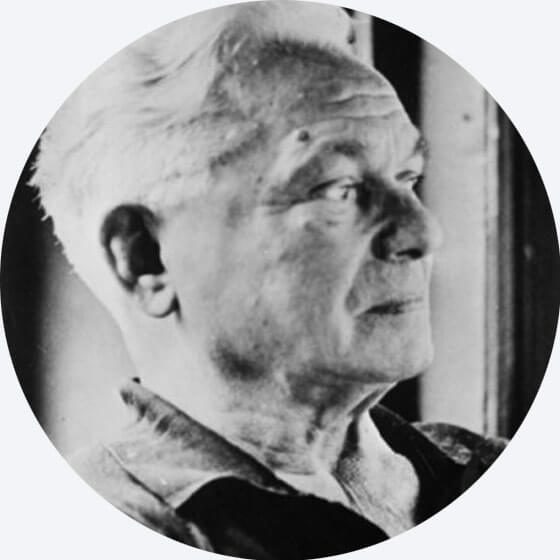
"Breathing is the first act of life, and the last."
JOSEPH PILATES
How is chest breathing performed?
Inhalation takes place through the nose. The diaphragm lowers. The three-dimensional movement of the ribs ensures oxygen uptake even in the tips of the lungs. In addition, the mobility of the ribs is increased.
The exhalation, slightly prolonged in time, takes place through the mouth. If necessary, we close the lips slightly to create a so-called "Lip brake" to generate.
A Lip brake video you will find by the way in our Professional tips.
The lip brake supports the almost complete emptying of the lungs. The diaphragm relaxes and lifts upward. The resulting suction pulls the abdominal organs upward with it. During the execution of the movement, the center of the body is both mobilized and stabilized.
Video: Pro tip for Pilates breathing
How long should the breaths be?
The length of the breaths depends, among other things, on age, training, current state of health, lung performance, exercise, etc. For this reason, it is especially important for beginners to stick to their own usual breathing rhythm for the time being.
Increasingly, this can be adjusted according to our instructions in the training videos. However, it happens again and again that Pilates students keep their own breathing rhythm because they feel that it is good for them. This is also allowed.
Is there anything you can do wrong with Pilates breathing?
It can happen that one breathes too forced. This means that during inhalation the thoracic spine is hyperextended, and during exhalation the abdominal wall is pulled inward too tightly.
This should be avoided in any case because, as already mentioned above, it changes the alignment of the spine. It also sometimes happens that the cheeks are inflated too tightly during exhalation and the lips are compressed too much. This leads to tension in the neck and jaw muscles.
Briefly summarized:
- The natural posture should not be lost during breathing.
- Breathing should not be forced too hard.
- The facial muscles should remain as relaxed as possible.
- Avoid strong abdominal retraction - the abdominal wall is only gently activated!
Is Pilates breathing the only correct breathing?
Absolutely NO!
Basically, there is no right or wrong with breathing techniques. The question is always in the foreground: What do I want to achieve with the breathing technique?
Yoga, Qi Gong, Tai Chi, etc. offer differentiated breathing techniques that have a wide variety of effects on the organism. In Pilates training, the emphasis is on strengthening the center of strength and improving the quality of movement.
At the end of a Pilates workout, we usually recommend a short breathing meditation. The gentle guidance from chest breathing to abdominal breathing calms the mind and relieves the tension caused by the workout. Breathing meditation also promotes muscle regeneration.
What else might interest you about breathing
Babies are given the perfect breathing technique in the cradle. When breathing in, the abdomen, flanks and chest expand in a steady rhythm. This ability decreases with age. As a result, microcirculation slows down and absorbed nutrients are less easily converted into energy. The skin becomes sallow and the ability to concentrate decreases.
For the sake of our health we should therefore pay more attention not only to nutrition, but also to breathing. The autonomic nervous system is directly linked to the respiratory center and influences almost all bodily functions such as digestive processes, stress processing, blood pressure regulation, immune defense, mental performance and much more.
So in this sense - be aware of your breathing and try to direct it so that it supports you in everyday life and gives you energy.
In our online Pilates course the topic "Breathing in Pilates Training" is explained with further professional tips. And of course practiced during each workout.

